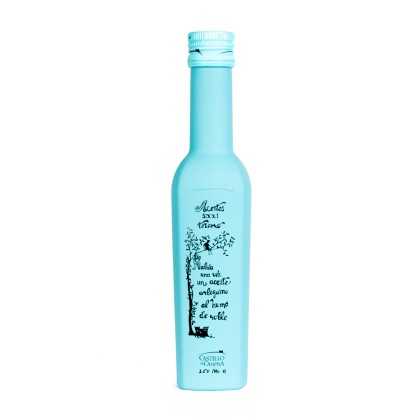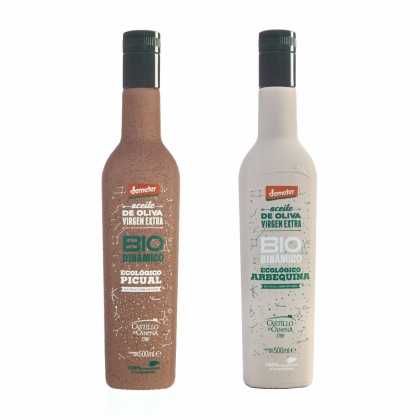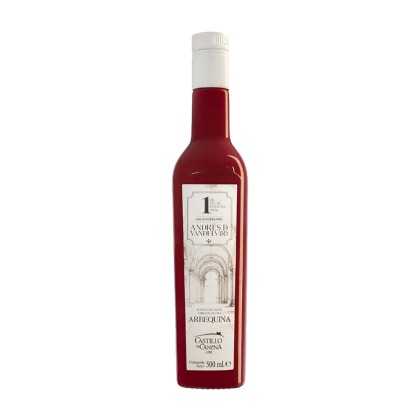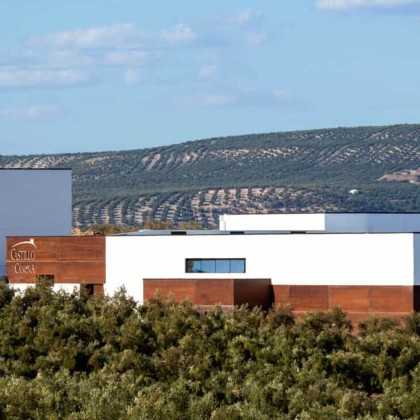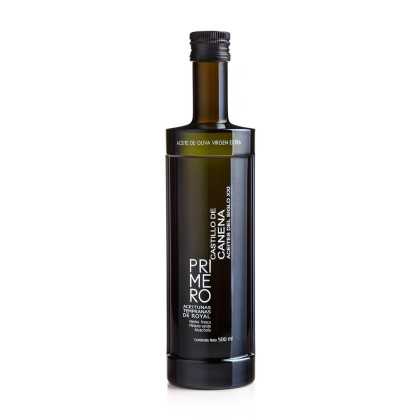Castillo de Canena Premium Olive Oils
Castillo de Canena Spains premium olive oil producer of Jaen. One of the famose Spanish olive oil brand.
CASTILLO DE CANENA
Castillo de Canena is located in the middle of a lush green River Valley of Jaen; the province of Spain. Their olive oil production history goes back to as long as 1780. This olive oil company got its name from the family-owned castle situated among the hills of the township of Canena.

Castillo de Canena not only produces pure and flavor rich olive oil but also welcomes visitors for a year-round on Mondays from 16.00 to 19.00. For more than 3000 years, Spain is known as the land of olives. Its soil is famous for the production of high quality olives that own a very unique aroma, flavor, and scent. Castillo de Canena is well aware of this land specialty and they have beautifully utilized this blessing of mother nature.

Their olive groves are bolstered in the vast lands of the Guadalquivir River, between the Cazorla and Mágina mountain chains. This natural habitat is perfect for the growth of healthy olives. With constant care, hard work and enthusiastic spirit Castillo de Canena has stretched its olive oil sale to more than 40 countries across the world.
Their aim is to monitor each and every step of olives’ production, to make their team stronger and to always strive for excellence. Which is, I am pretty sure, is the thing that makes them the best producer among their competitors.
Types of Olives at Castillo de Canena
In Spain, every olive oil producing company plants those unique olive trees which suit best according to their land, soil, environment and weather conditions. When it comes to the olive groves of Castillo de Canena, you will find very different varieties of olive trees.

The main olive trees planted by Castillo de Canena are:
- Arbequina
- Picual
- Harissa
- Royal
Among the above-mentioned varieties, the main proportion of oil is extracted from Arbequina and Picual variety. Some variety of olive oil infused with sea phytoplanktons and essential oils from flowers and other plants are also produced by Castillo de Canena.
Olive Oil Production
Now, let’s talk about the Castillo de Canena’s olive oil production. The flavor, quality, and aroma of olive oil not only depends upon the variety of olive trees, environment, weather conditions and soil health but also depends upon the time and way of fruit picking and the methods of oil processing.
The following steps are involved in the olive oil processing at Castillo de Canena:
- Land Selection
Among the groves, Castillo de Canena selects the best land after various soil tests for olive tree plantation. Soil composition slightly changes from area to area every year, the purpose of testing is to know which area will be suitable according to the current season to get the healthiest olives for oil extraction.
- Picking
The excellence key to get the high-quality olive oil is to carefully choose the picking time. It is extremely important to monitor the departure time for sublime product and Castillo de Canena knows this aspect very well.
Olives are picked from tree to tree through inverted umbrella vibrators to prevent any type of fruit bruises. If the fruit is damaged or bruised, then the oxidation process is triggered which ultimately affects the oil’s quality.
- Transport
After pricking, olives are transported to the ‘Almazara’, the milling equipment within less than 2 hours. The longer the olives stay in storage tanks, the higher the risk of fruit spoilage occurs.
- Milling
The almazara mill was the very first mill owned by Castillo de Canena in Spain that gained the ISO 22000 Standard certification. The double grid mill is used with slow speed to prevent heating up of the olive paste. The temperature is maintained below 22°C
- Malaxation
The milling step is followed by malaxtion. In this stage, the olive paste is set for churning in a hermetically sealed refrigerated unit at a temperature of 21°C. The purpose of this process is to ease the separation of oil droplets from water and fruit pulp.
- Decanting
Decanting is the separation process in which centrifuge machines are used to separate oil from the rest of the fruit material. No water is added in this step.
- Filtration
Filtration is done with cellulose plates fro subsequent preservation of the oil. It is a very important step and oil’s quality greatly depends upon it.
- Preservation
Olive oil is then preserved in steel drums in an inert atmosphere using nitrogen. Temperature is maintained 18 to 20°C to increase the shelf life of the product.
- Bottling
Castillo de Canena bottle their products on demand of the customers. Before bottling, controlled amount of nitrogen is injected into the glass bottle to preserve the taste of olive oil.
Top Products of Castillo de Canena
Castillo de Canena do not sell their products directly from their website, rather they have various trust worthy distributor channels all around the world.
Some of their famous extra virgin olive oil, pure and with some added flavors are listed below:
- Family Reserve
- First Day of Harvest
- Biodynamic Picual
- Early Royal
- Harissa Olive Oil: unique spicy olive oil
- Horizontal Tasting
Under their special edition category you will find very unique and alluring products with un-forgetable taste, some of the items are mentioned below:
- Smak
- Santceloni
- Calima
- Dani Garcia
- Cinc Sentits
- Bibo
Last Words
Castillo de Canena is very different from other olive oil producing companies, as it abides by the natural laws. They have kept their constant focus on environmental sustainability and have played a very significant role in society, economy and cultural promotion.
Castillo de Canena has constantly instilled their confidence by revisiting their history regarding the olive production by their ancestors and have focused on the old Roman methods of olive tree plantation. These little things made a huge difference in the values of this company and have greatly helped Castillo de Canena to rise as a prominent tag.


